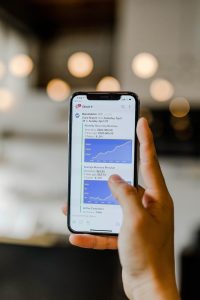Forex, also known as foreign exchange, is the largest financial market globally, with a daily trading volume of over $5 trillion. This market is active 24 hours a day, five days a week, making it possible for traders to trade at any time. However, not all trading hours are created equal, and some times are slower than others.
The Pacific Time Zone is the time zone that covers the west coast of the United States, including California, Oregon, and Washington. Forex traders in this region need to know when the slowest time to trade is to make informed decisions and maximize their profits. In this article, we will explore the slowest time to trade forex in the Pacific Time Zone.
The Pacific Time Zone is eight hours behind the Coordinated Universal Time (UTC-8). Forex trading hours in this region start at 5:00 PM on Sunday and end at 2:00 PM on Friday. During this time, the forex market is active, with different trading sessions overlapping.
The forex market is divided into three main trading sessions: the Asian, European, and North American sessions. The Asian session starts at 5:00 PM Pacific Time and ends at 2:00 AM Pacific Time. The European session starts at 11:00 PM Pacific Time and ends at 8:00 AM Pacific Time. The North American session starts at 5:00 AM Pacific Time and ends at 2:00 PM Pacific Time.
The slowest time to trade forex in the Pacific Time Zone is during the Asian session. This is because the Asian session is the least volatile of the three trading sessions. Volatility refers to the amount of price movement in a currency pair. Higher volatility means that prices are moving rapidly, while lower volatility means that prices are relatively stable.
During the Asian session, the major financial centers in the region, including Tokyo, Singapore, and Hong Kong, are active. However, these financial centers are relatively small compared to their counterparts in Europe and North America. As a result, trading volume and volatility are typically lower during the Asian session.
Lower volatility during the Asian session means that traders may find it harder to find profitable trading opportunities. This is because lower volatility reduces the chances of significant price movements, making it harder to make a profit. Traders who trade during the Asian session may need to adjust their strategies to take advantage of the lower volatility.
One strategy that traders can use during the Asian session is range trading. Range trading involves identifying key levels of support and resistance in a currency pair and buying or selling when the price reaches these levels. Range trading works well during periods of low volatility because prices tend to move within a narrow range.
Traders can also use automated trading systems during the Asian session. Automated trading systems use algorithms to execute trades automatically based on predetermined criteria. These systems can be programmed to take advantage of the lower volatility during the Asian session.
In conclusion, the slowest time to trade forex in the Pacific Time Zone is during the Asian session. Lower trading volume and volatility during this session mean that traders may find it harder to find profitable trading opportunities. However, traders can adjust their strategies to take advantage of the lower volatility, such as using range trading or automated trading systems. Understanding the slowest time to trade forex in the Pacific Time Zone can help traders make informed decisions and maximize their profits.





